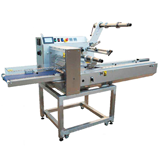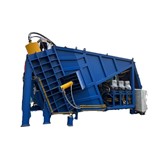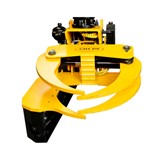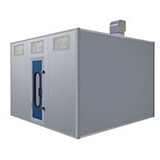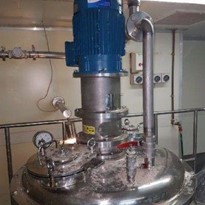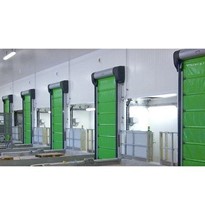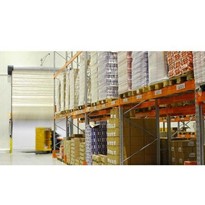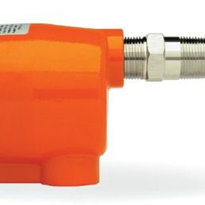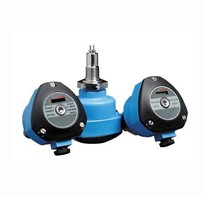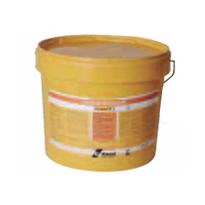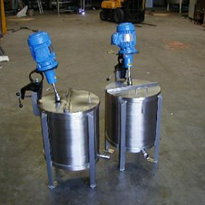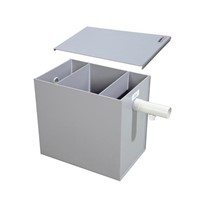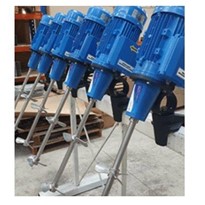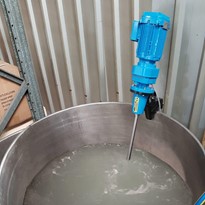Mixing, dispersion and emulsification are all used in manufacturing to combine liquids of varying viscosity, solids and other materials. Which process is right for your application will depend on the materials you are trying to combine.
Mixing & Agitation
Mixing is the blending of multiple ingredients or materials to form one combined solution. As a flow-driven process, it is typically used for ingredients that are easily blended together, such as liquids of a similar viscosity or with similar properties, or soluble solids that will easily be dissolved within a liquid. The rotation of an impeller (or multiple impellers) creates a flow of the materials throughout the vessel, and this turbulent fluid motion causes the materials to combine. Mixing is an ideal process for blending chemicals with the same properties, dissolving sugar or blending beverages or syrups for the food industry, or combining water with coagulants to treat water in wastewater industries.
Different impeller speeds and styles can be used depending on the viscosity of the product. Axial flow impellers are common, as are marine style propellors. FluidPro’s wide range of mixers and agitators are designed to blend ingredients within different vessels, including within small IBCs or drums, or by providing axial flow through the top, base or side of a larger tank.
Dispersion
Unlike mixing, which is flow-driven, dispersion is a shear-driven process, with the edges of the impellers used rotating at high Revolutions Per Minute to create a suction action. This draws particles down to the rotating dispersion blade, which pushes them outwards, and this increased velocity and shear force breaks down large particles and agglomerations. By breaking down larger particles, dispersion allows the combination of fluids with varying viscosity, solids and liquids, or even liquids and gases to create foams. As it is an ideal process for mixing different combinations of materials, dispersion is used across a variety of industries. Most commonly used for mixing paints or inks, it is now also used in cosmetics manufacturing, plastics and polymers manufacturing, the mixing of lighter base liquids and more. FluidPro High Shear Dispersion Mixers are ideal for rapid dispersion of ingredients, featuring high flow cavitation discs and blades to suit products of all viscosities.
Emulsification
Emulsification is a vacuum-based mixing process ideal for combining immiscible liquids—meaning fluids that cannot typically be mixed together, such as oil and water. Generally, when immiscible products are combined, they will naturally separate back out, making it difficult to create a homogenous mixture. Emulsifying them, rather than mixing them, allows one product to evenly disperse through the other, so it will not separate. Using low pressure vacuum suction to centrifuge particles towards a pump head, emulsifiers push particles through a slotted head at high pressure, and this change in pressure states forces larger particles to break down into smaller pieces. Reducing the particle size in this way allows one product to be dispersed evenly throughout the other product, creating a uniform solution. Emulsification is a common process in the food processing industry for combining oil with water-based foods, or mixing foodstuffs that do not typically mix together, creating emulsions such as yoghurts, sauces, margarine and more. It can also be used to create lotions and creams for the cosmetics industry or blend plastics and polymers.


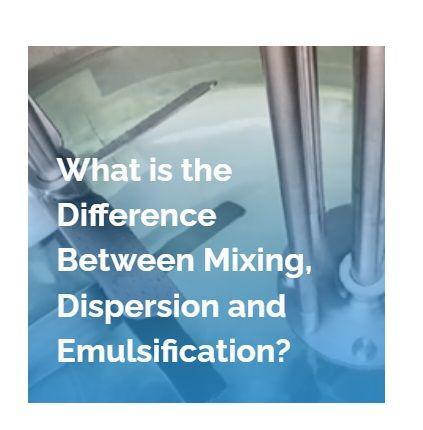
-160x160-state_article-rel-cat.png)
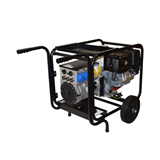



-160x160-state_article-rel-cat.png)

-160x160-state_article-rel-cat.png)



-160x160-state_article-rel-cat.png)

